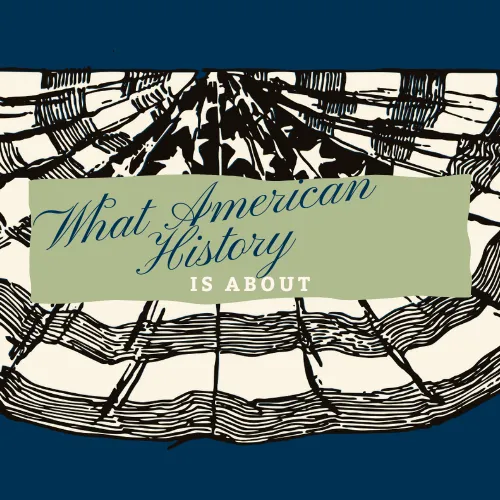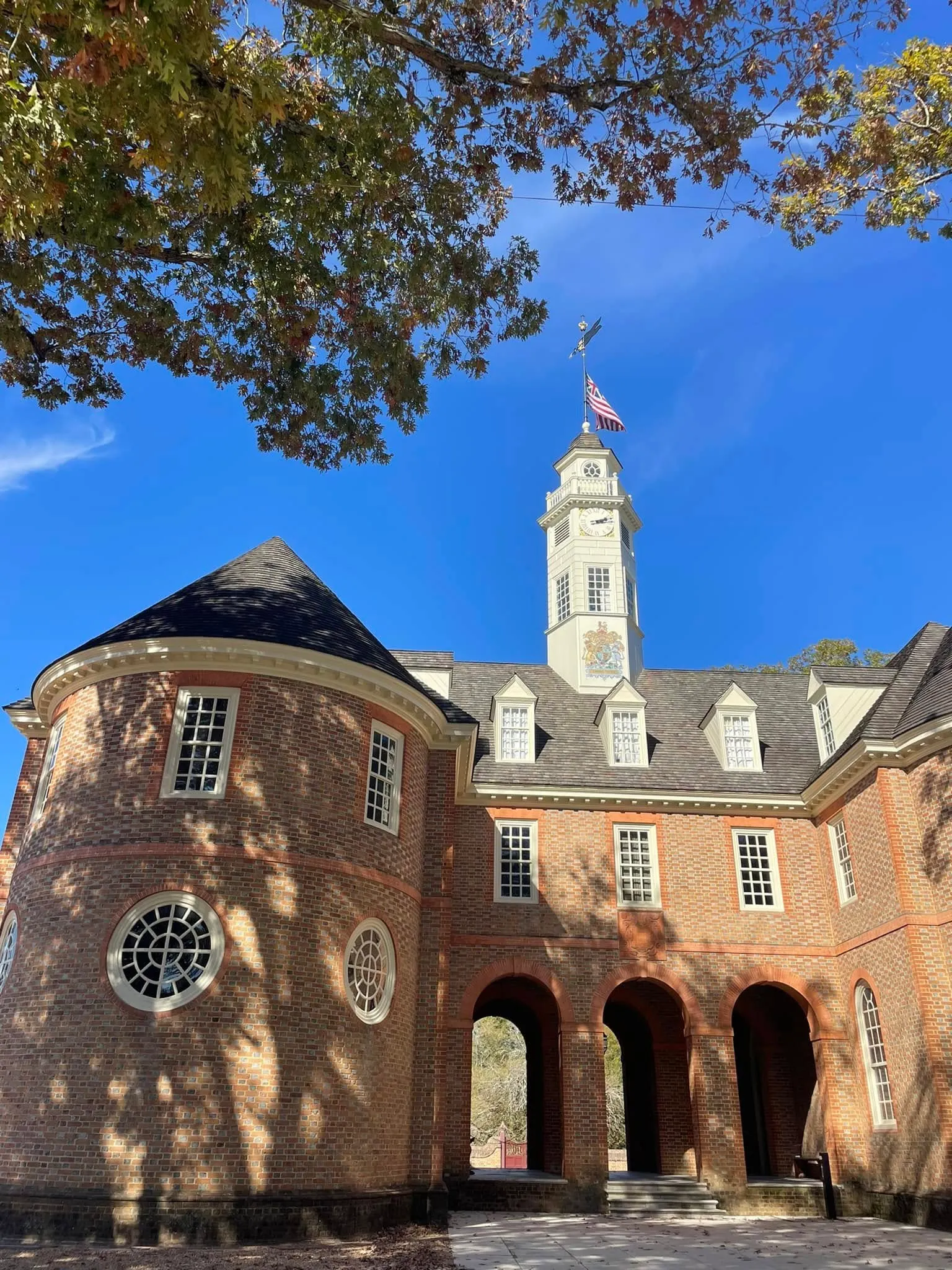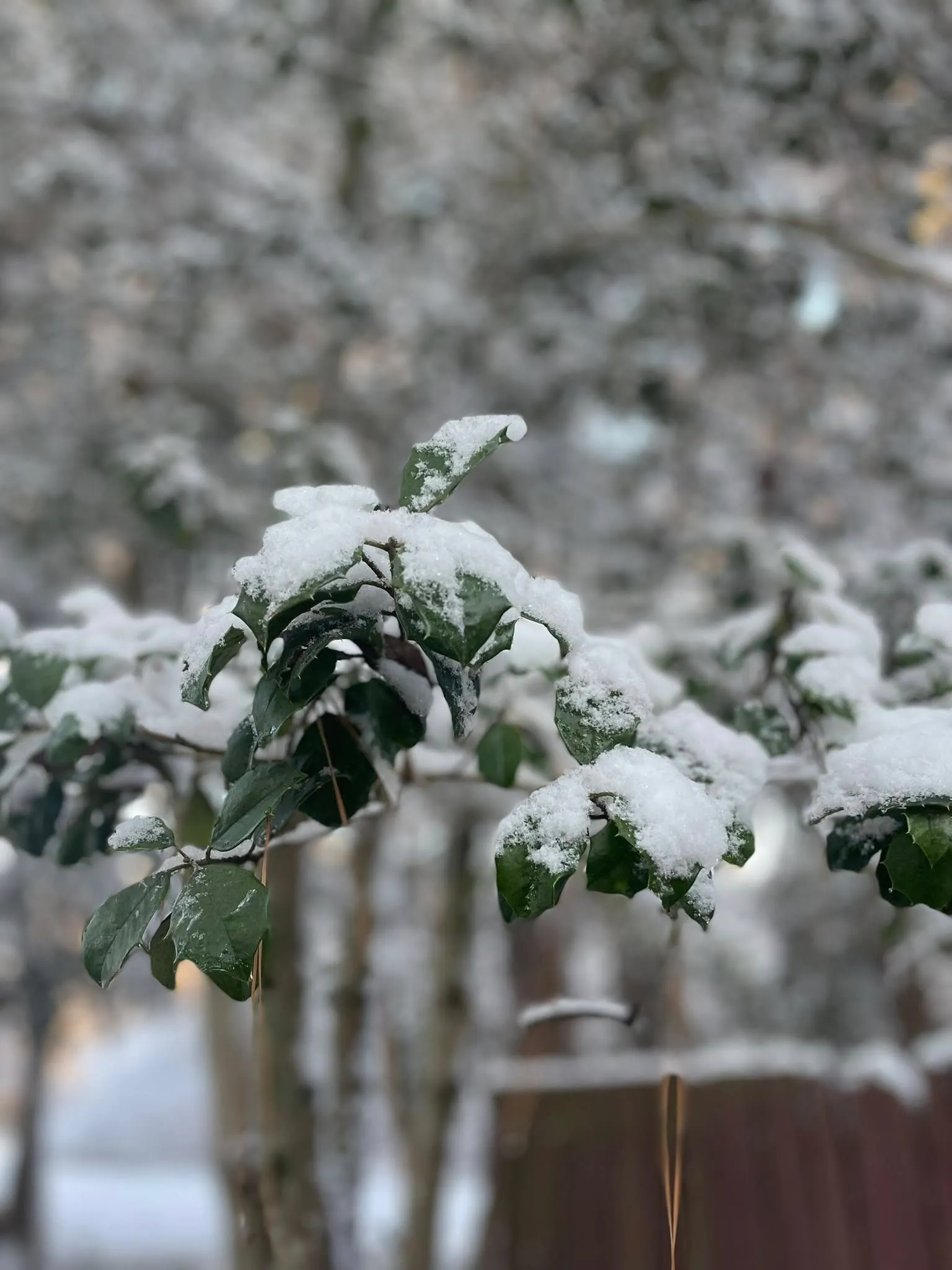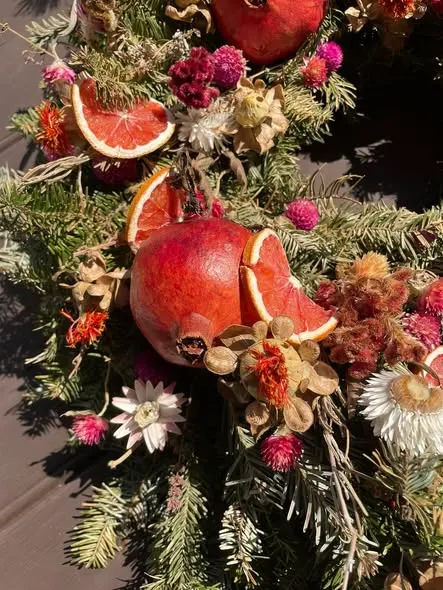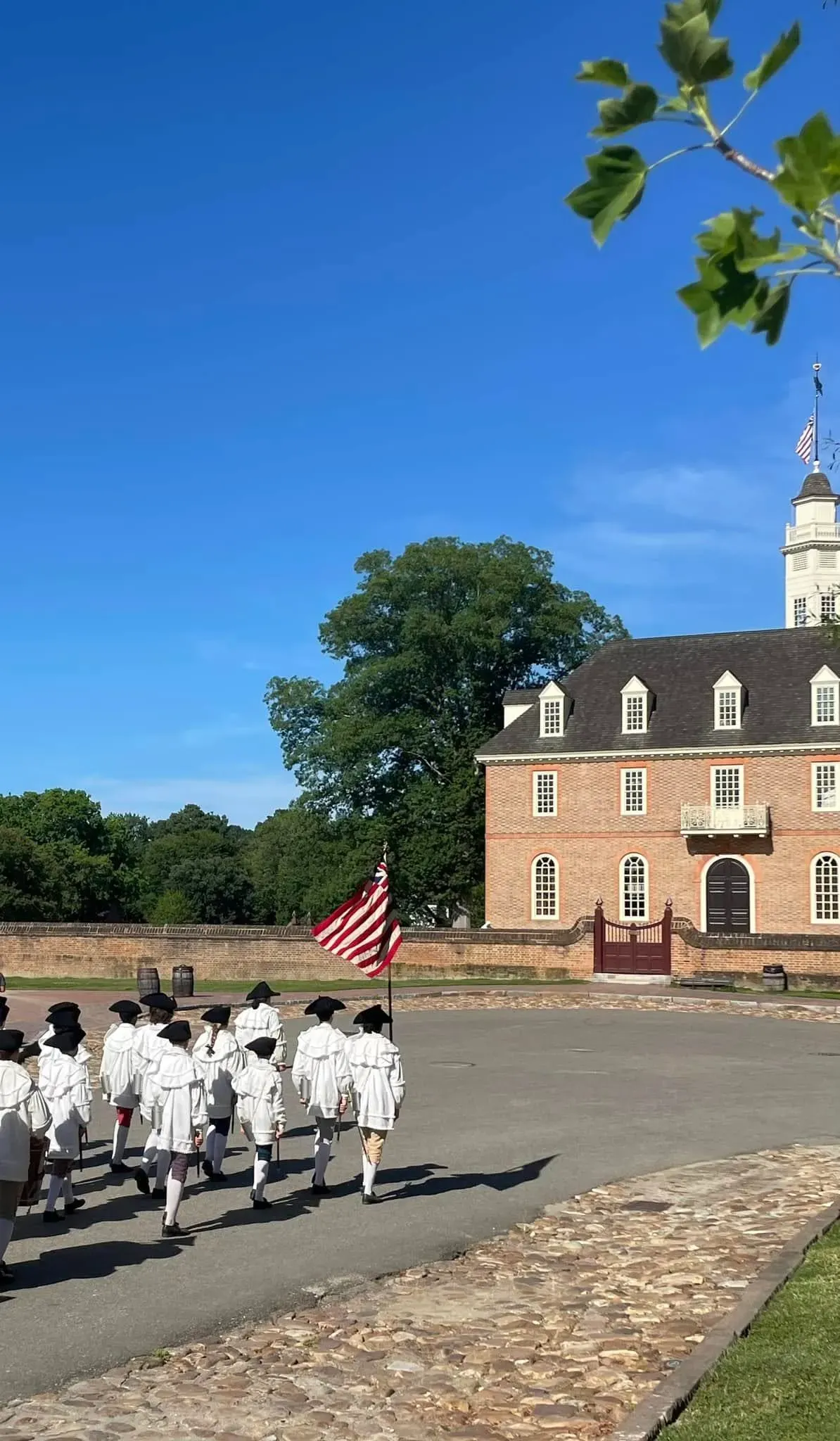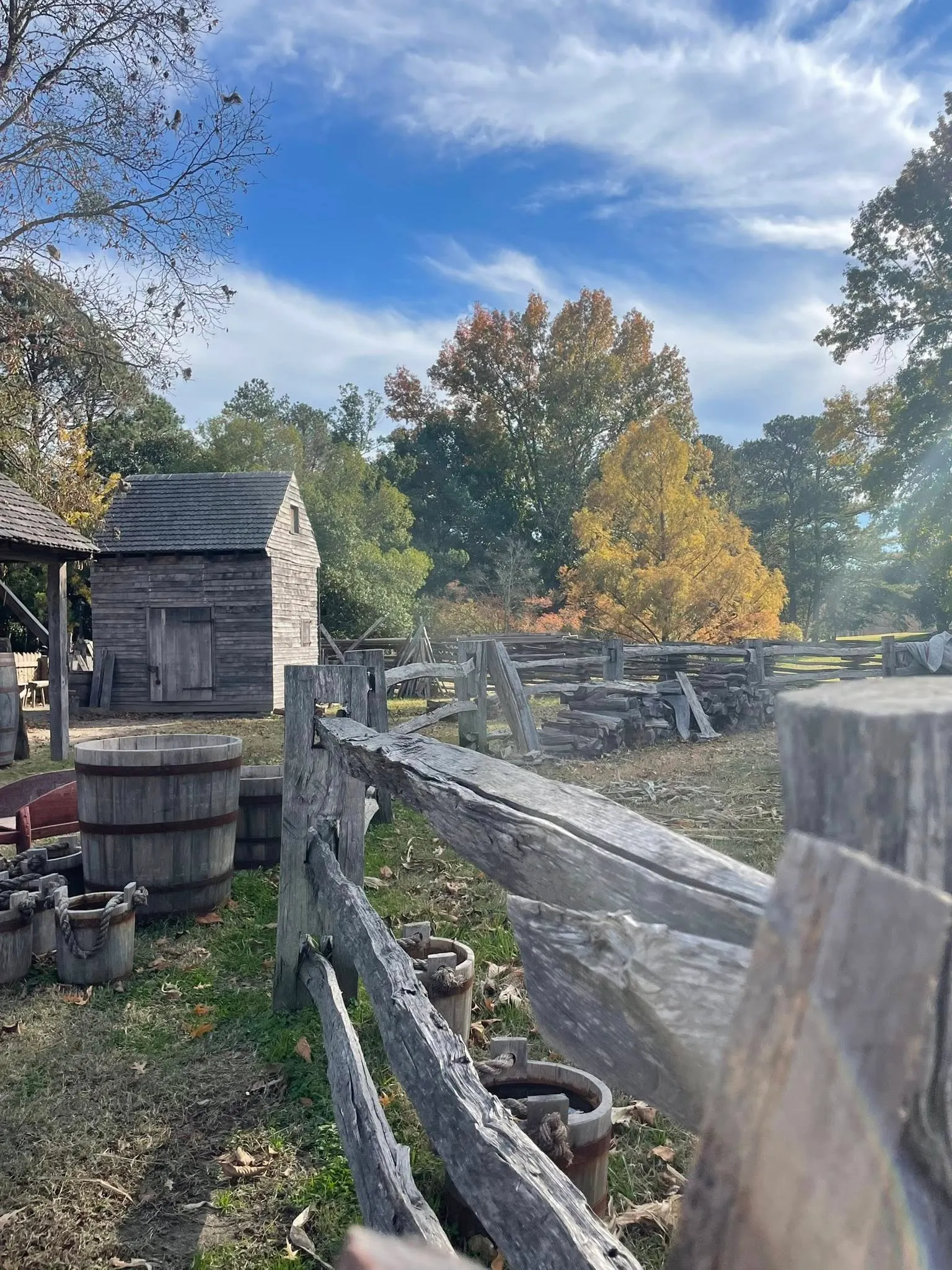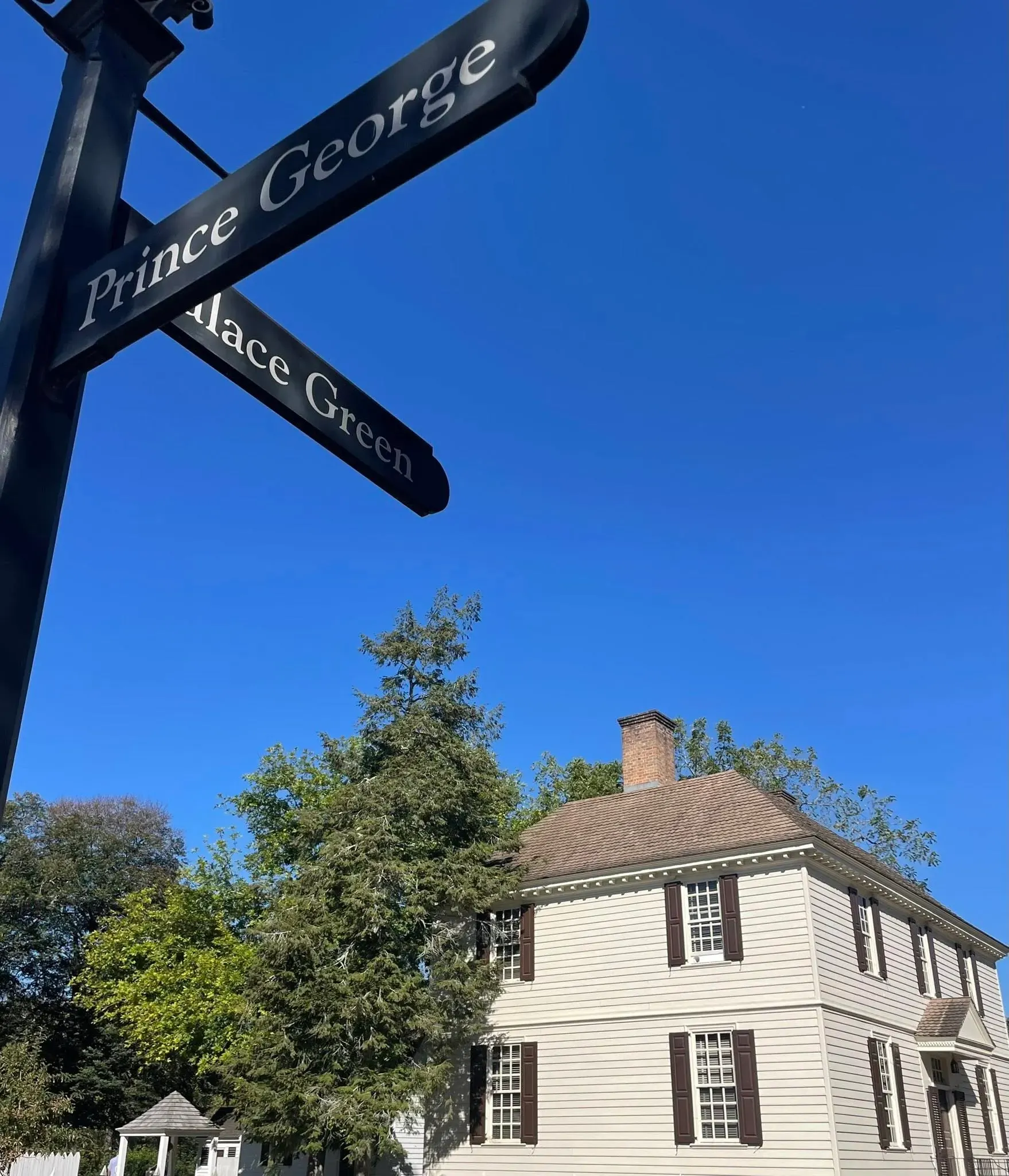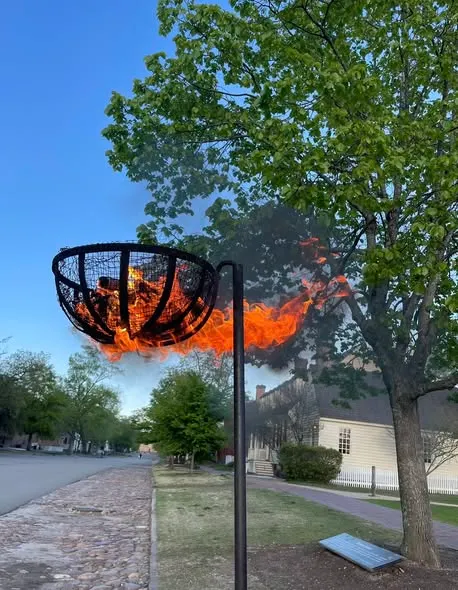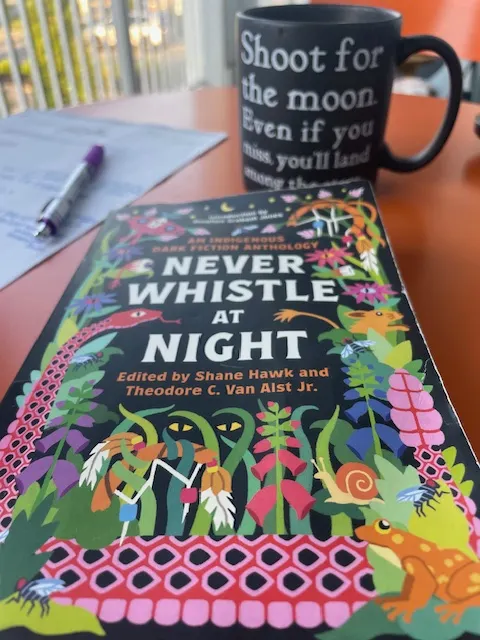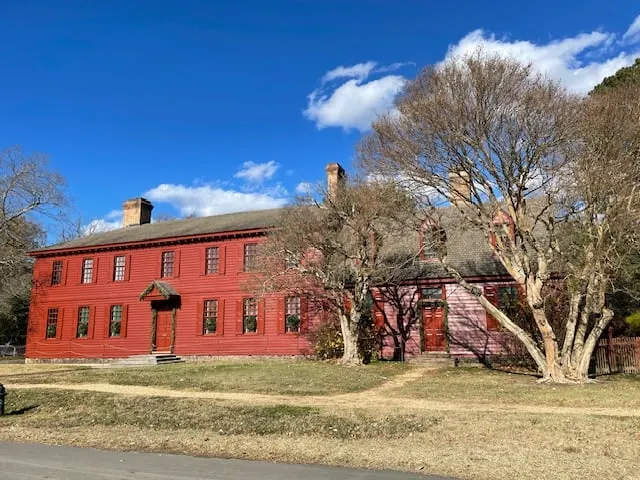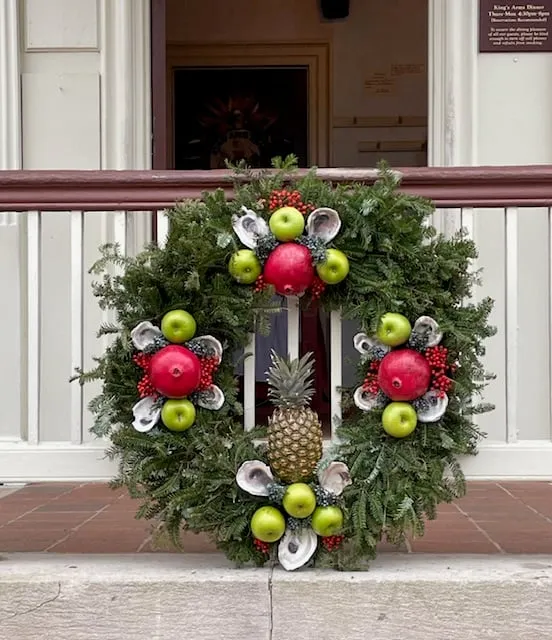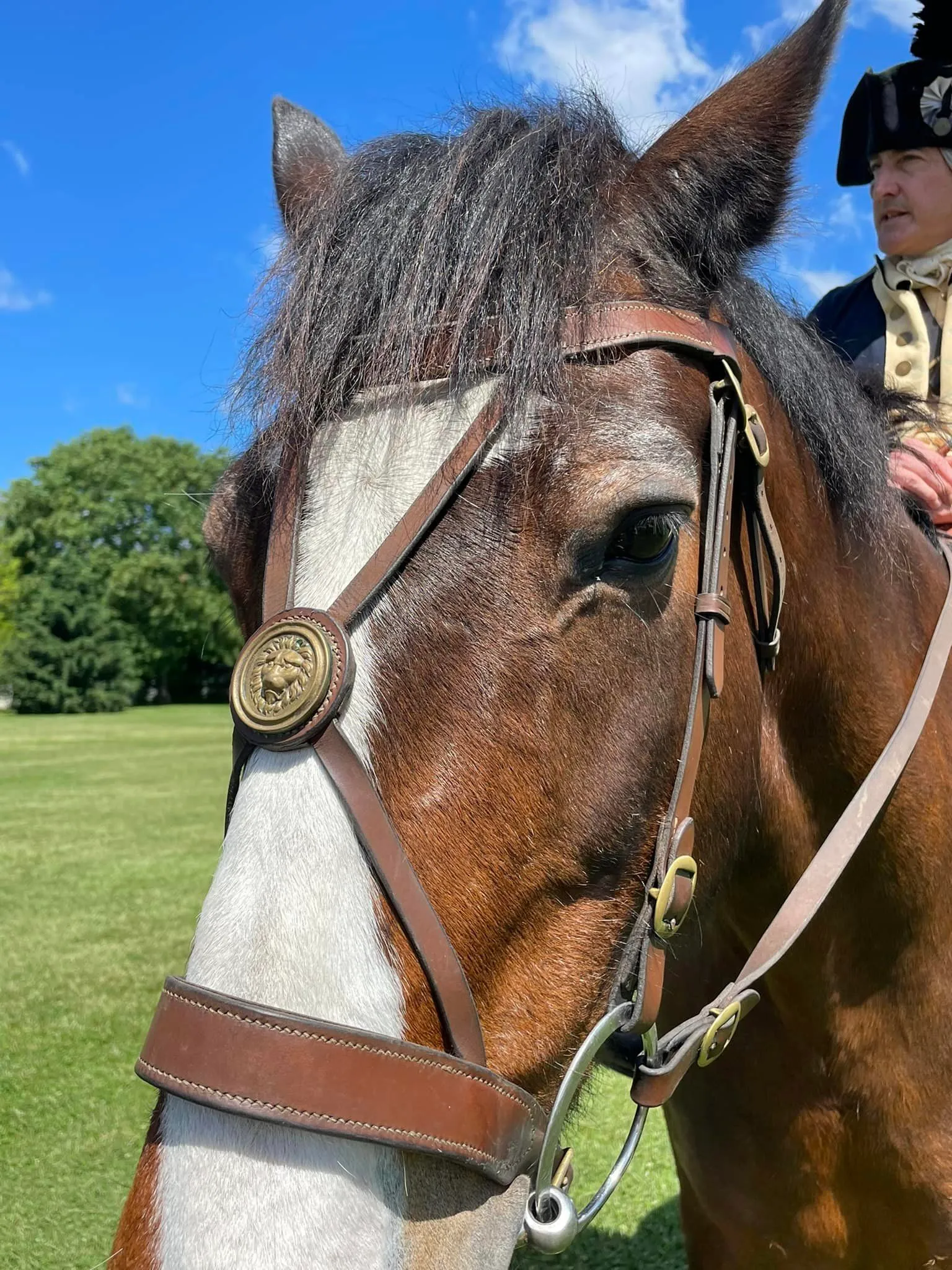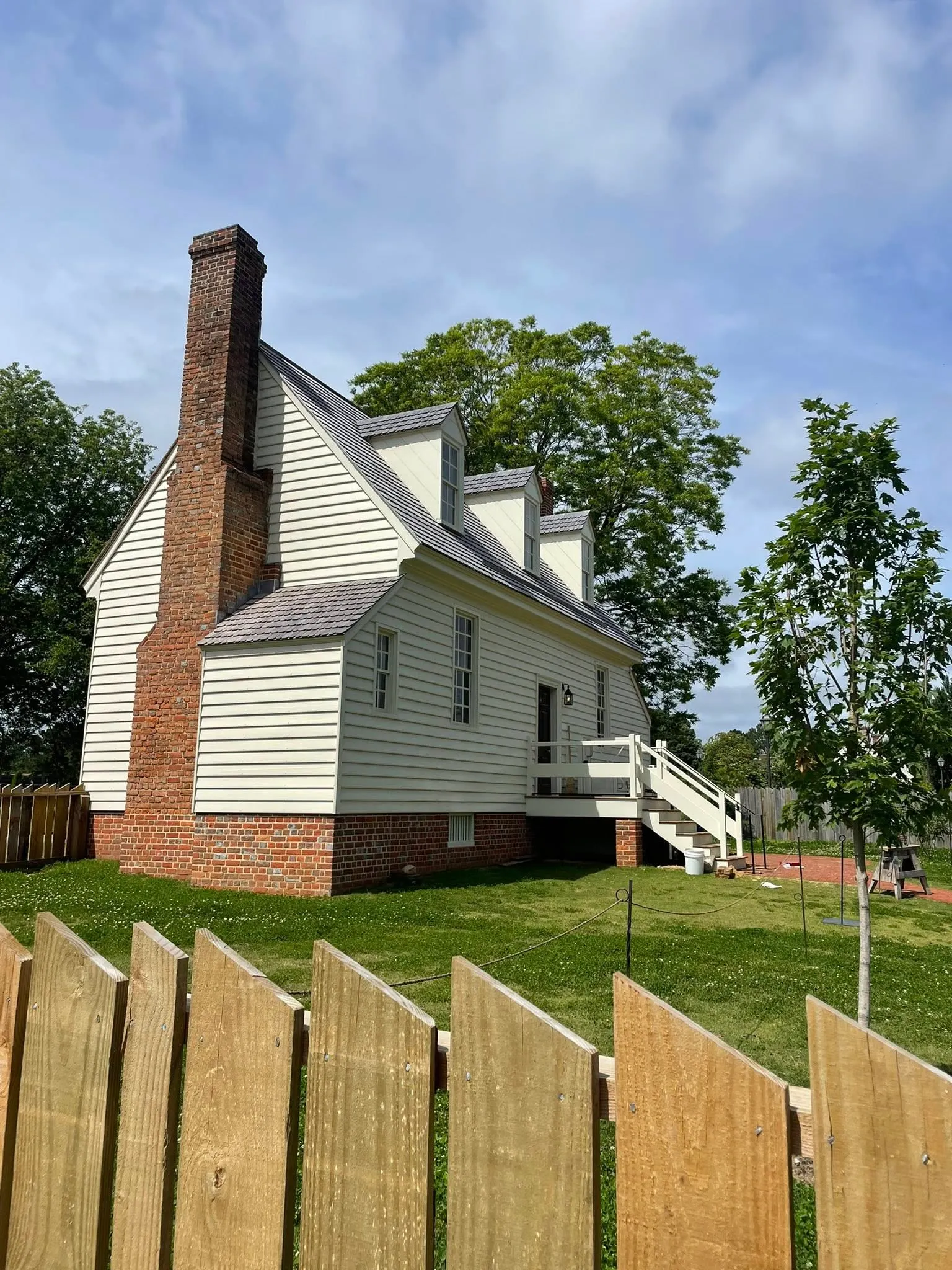Things to Love About the Raleigh Tavern, Past and Present
Ok, the Raleigh Tavern has a room called the Daphne Room, but that's not my only "connection" to the place. As Americans, we ALL have some pretty serious connections to this place!
The Daphne Room is a private dining room in the Raleigh Tavern that could be "rented" for use. And is it known for sure... no--- but I have it on good authority there are historians that think this is quite possible:
The Daphne Room is where Patrick Henry, Thomas Jefferson and a select few "hatched" the idea of intercolonial committees of correspondence.
Overall the Raleigh Tavern can be argued to be one of the true birthplaces of the United States of America.
In this post, I'm going to drop a bit about 18th century taverns in general as well as information specific to the Raleigh Tavern. By the end I hope you get a glimpse into why I love this building and you possibly share some of that love.
RELATED: This post sharing what I write about and why!
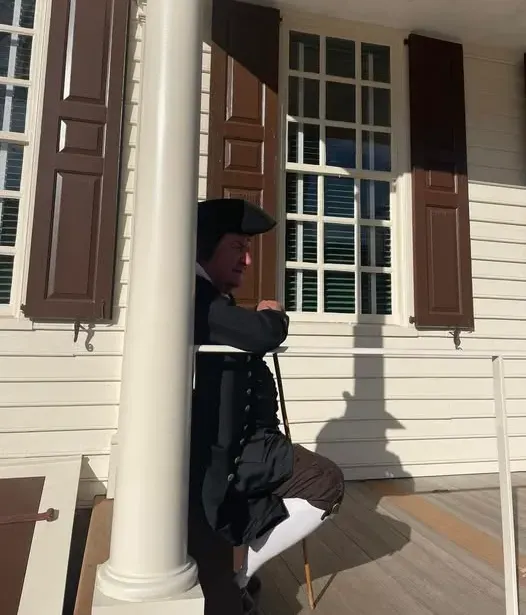
Richard Schumann as Patrick Henry - click here to see him in action!
A disclaimer before moving forward: As a blogger, I use affiliate links sometimes! I may receive commission from purchases I share; it does not change your price but sometimes you might get a discount.
First, some background about 18th century taverns in Williamsburg.
I'll open this section with a request and invitation: if you know more about 18th century taverns than I (which is a strong possibility!), please comment if what I've learned is typical around the United States or pretty standard to Virginia laws and practices!
How did a tavern operate?
Taverns were not only a place to stay, but by law in 18th century Virginia they were also required to provide food and a place for your horses-- all of this for a set price. That price was determined locally, in each county.
In addition to your "set price," you could rent a private dining space or partake in what might be set aside for gaming and gambling! Having a space for billiards, cards and all types of gaming of the day, were popular ways for tavern owners to make extra income.
And of course, there was the bar! It was actually made of literal bars... because expensive ingredients like sugar were kept behind it. If the barkeep had to step away or make a run down into the cellar for something, having those bars in place meant protecting the inventory!
How else can a tavern-owner increase income?
Entertainment in the form of subscription balls and dances, lectures, and concerts, to name a few. Music was popular but it was also the age of enlightenment, right?
With the College of William and Mary down the street during the Revolutionary era, and Williamsburg being the capitol city for a time before moving to Richmond, taverns were popular places for learning and growing as well as enjoying music, wine, and ale!

The Raleigh Tavern as a showcase of historical reference.
I learned yesterday, from a fantastic guide named Victoria, that the reconstructed Raleigh Tavern we were inside, was the first reconstructed building in Colonial Williamsburg open to the public, back in 1932. That was even before two of the most famous buildings around here were opened up: the reconstructed Governor's Palace and Capitol Building!
From a practical standpoint, we can learn about taverns in general when taking a guided tour of the Raleigh, but also, we can learn about the people who lived, worked, stayed, and met there.
When in town on business, names you may have heard frequented and stayed at the taverns. It's heard that Washington preferred Christiana Campbell's (where I had my most recent birthday dinner!) and Jefferson stayed at the Market Square Tavern.
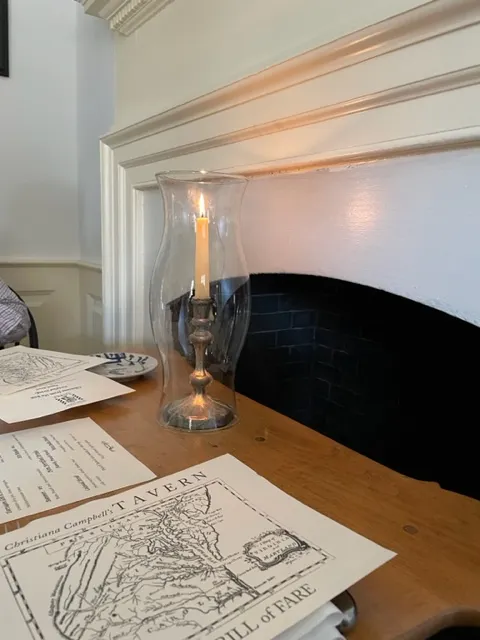
What happened at the Raleigh Tavern?
Jefferson did not meet his wife there, but he tried, and many people did meet there.
A story I love to hear is how a still-teenage Jefferson made a failed attempt at courting a young lady named Rebekka Burwell. It was at a subscription ball held at the Raleigh and he reportedly stumbled all over himself. In the end, it worked out because he later met and fell in love with Martha Skelton, over music, a passion they shared.
The meetings weren't just for entertainment and weren't only social.
As always, there are many humans that made our history.
Mr. James Southall is one of the those humans that many of us may not know about in detail. He took a massive risk and it truly paid off- we have our liberty and he survived to see it, rather than be hanged for treason.
In fact, Southall owned the Raleigh Tavern until the 1790's, well after our Revolutionary War ended. A testament to his belief in our new goal of independency and the rewards that followed.
You may not know his name, but he was as courageous a patriot as any during the Revolutionary period.
Think about it: providing a safe space for acts of treason against the Crown to take place!
The men who planned and organized the foundation for the United States of America must've had great trust in Mr. Southall and those around him to choose the Raleigh for their meetings.
RELATED: Click here for a fantastic historical fiction book created around the Southall children (yes, it's for ages 9 and up, written by a wonderful historian and CW volunteer, Michael Cecere and his daughter Jennifer.)

Stream referenced by the Ceceres, used as inspiration
89 men met at the Raleigh Tavern and the process of independence began.
In 1773, Lord Dunmore dissolved Virginia's legislature. Royal Governors had that power, and he used it.
So what happened next?
Peyton Randolph, Speaker of the House of Burgesses and future president of the Continental Congresses, led a whole mess of elected officials down the street (more likely figuratively than literally) into the Apollo Room of the Raleigh Tavern and a shadow government met.
This my friends, was the start of breaking free from the mother country. It all happened here.
I know some of you may say "wait, there are other colonies, it didn't just happen in Williamsburg, Virginia" or "what about the tea party in Boston?"
I'll argue this: I'm finding that the saying "as Virginia goes, so goes the rest" to have merit.
Virginia was the biggest (most populus and had bunches of land) of the colonies. She was the first to officialize a Committee of Correspondence (which began at the Raleigh) and create a Declaration of Rights to be adopted. Both of these firsts led to other colonies' actions.
And to Virginia declaring independence on May 15, 1776.
RELATED: To read more on the history of Virginia's Declaration of Rights click here to be linked into our National Archives.

Our framed copy of the Virginia Declaration of Rights
Visit the Raleigh Tavern if you can get to Williamsburg and as always, dig deeper.
No doubt, taverns throughout the Colonies served as safe havens for patriots, including those bringing news from one colony to the next. They're quite a vital part of our history and I plan to keep learning and keep updating/adding more to the blog!
If you have a chance to visit Colonial Williamsburg, the largest living history museum in the world, let me know! And also, make sure to tour the Raleigh Tavern. Ask questions about the topics, people, and things (even the billiard table and the bar!) in this blog post. Or ones I haven't mentioned or learned myself yet.
Always dig deeper. Remember, history is made by humans, humans are complex, and the things we do and create aren't always found in a textbook.
RELATED: Click here to visit the Rockefeller Library online for some amazing primary sources.
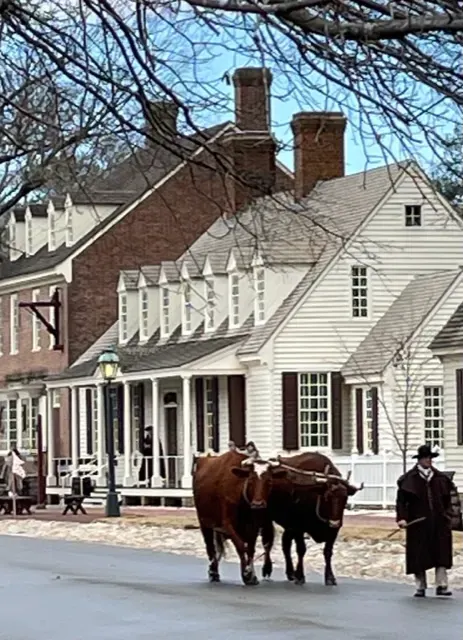
Rare breed oxen passing by the Raleigh Tavern.
There is a huge practical disclaimer to the content on this blog, which is my way of sharing my excitement and basically journaling online.
1) I am not a historian nor an expert. I will let you know I’m relaying the information as I understand and interpret it. The employees of Colonial Williamsburg base their presentations, work, and responses on historical documents and mainly primary sources.
2) I will update for accuracy as history is constant learning. If you have a question about accuracy, please ask me! I will get the answer from the best source I can find.
3) Photo credit to me, Daphne Reznik, for all photos in this post, unless otherwise credited! All photos are personal photos taken in public access locations or with specific permission.
Are you enjoying this blog? Use my online tip jar to buy me a coffee!
And if you're interested in starting a blog for business or to share your passion like I do with this one, let's discuss it! Book a free call and maybe I can help you with my 3-2-1 offer... Click here.
